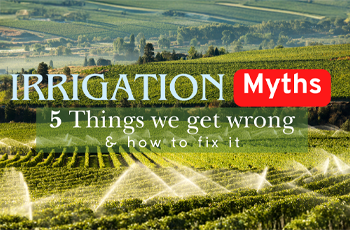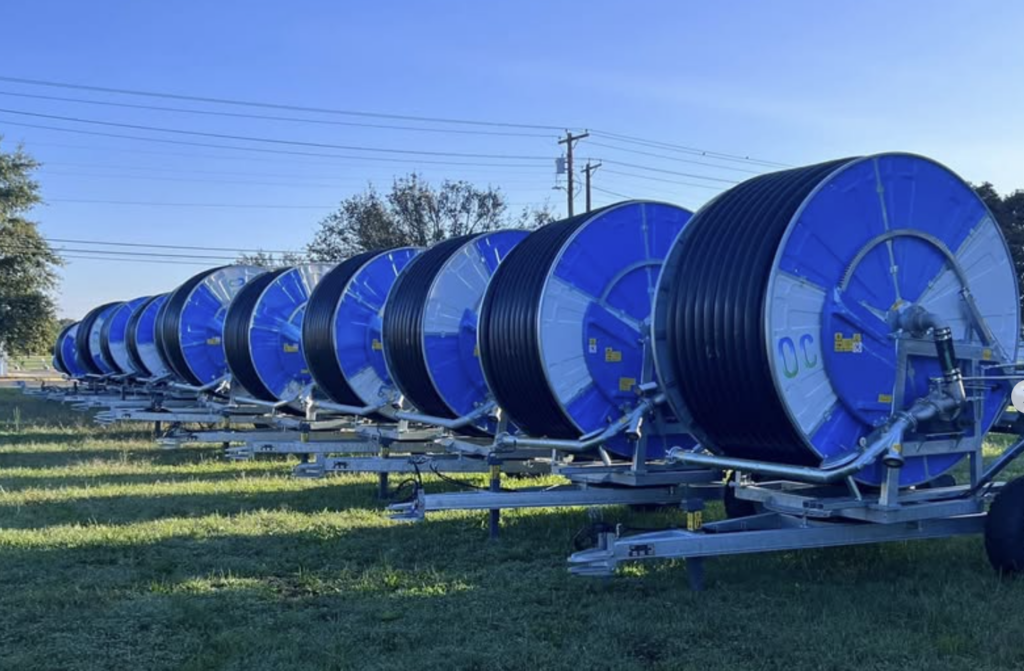(877) 533-7878
Irrigation Myths: 5 Things We Get Wrong (and How to Fix Them)

June is peak growing season and irrigation season. But misinformation still circulates across fields, farms, and greenhouses. At Lee Rain, we’ve seen firsthand how the wrong assumptions can lead to wasted water, lower yields, and system failures.
Here are five of the most common irrigation myths — and how to correct them with smarter practices and proven tools.
Myth 1: “It rains enough in June — I don’t need irrigation.”

The Truth: Rainfall in June can be misleading. While it might look like enough on paper, uneven distribution and short dry spells can still stress your crops. Waiting for rain (or assuming it’s enough) can set you back during critical growth stages.
How to Fix It: Use a reliable irrigation schedule that supplements rainfall rather than relying on it. Monitor weather trends and soil moisture to ensure consistency across your fields.
Smart Tools to Help:
- AgSense by Valley: Monitor irrigation remotely by adjusting scheduling, water precision irrigation, and reduces over and under watering.
- Metos Soil Sensors: Accurately measure soil moisture levels taking the guessing game out of farming

Myth 2: “I can skip maintenance until after the season.”
The Truth: Mid-season breakdowns are the most disruptive and they’re usually avoidable with regular checks and smart monitoring. Putting off maintenance can lead to lost crop potential and costly repairs.
How to Fix It: Build preventative maintenance into your regular schedule. Check for leaks, pressure drops, and uneven application before they become bigger issues.
Smart Tools to Help:
- Lee Rain Service & Parts Department: Our team is here to keep your systems running at peak performance. We’ll come out, inspect your equipment, and address potential issues before they turn into costly problems.
Myth 3: “Greenhouses and nurseries don’t need automation — a hose is good enough.”
The Truth: Manual watering is time-consuming and often inconsistent. For high-value or sensitive plants, over- and under-watering can quickly affect quality and profitability.
How to Fix It: Automate watering with precision systems designed for greenhouse and nursery environments. These systems improve consistency, reduce labor, and increase plant health.
Smart Tools to Help:
- Netafim MOD Drippers, NetBow™, Vibronet™, and MegaNet™ Sprinklers: Precision delivery for containers, benches, and beds.

- Talgil: A wide range of automated control solutions that make irrigation easier, smarter, and more consistent — perfect for greenhouse and nursery operations
Myth 4: “Hose reels are just for sports fields and turf.”
The Truth: Portable irrigation isn’t limited to turf. Small farms, pastures, orchards, and hard-to-reach areas benefit greatly from flexible, mobile systems.
How to Fix It: Use portable irrigation systems to supplement permanent setups or reach areas that don’t justify fixed infrastructure.
Smart Tools to Help:
- Micro Rain MR Series: Sturdy, self-retracting hose reels designed for flexible
arrangement. - OCMIS Vario Rain: Durable, easy-to-service hose reel with built-in alert systems.

Myth 5: “Irrigation isn’t something I need to plan for — I’ll figure it out as I go.”
 The Truth: Too often, irrigation is treated as a reactive task instead of a proactive strategy. But waiting until there’s a problem like crop stress, poor yields, or equipment breakdown, this usually means it’s already too late.
The Truth: Too often, irrigation is treated as a reactive task instead of a proactive strategy. But waiting until there’s a problem like crop stress, poor yields, or equipment breakdown, this usually means it’s already too late.
How to Fix It: Build irrigation into your seasonal planning from the start. That includes thinking about crop needs, water availability, infrastructure, and weather outlooks well before planting begins. Even a rough plan can help you respond faster, invest smarter, and reduce stress when the season heats up.
Irrigation isn’t just about equipment, it’s about mindset. The more intentional you are with planning, the more control you’ll have over the outcomes.
Final Takeaway
When it comes to irrigation, small misconceptions can lead to big consequences. By challenging these common myths and planning with intention, you can improve efficiency, protect your crops, and get more out of every drop. At Lee Rain, we’re here to support you with the knowledge, tools, and technology to help you grow smarter. This season and every season.
Have questions or want to learn more?
Call us at 877.533.7878 or email sales@leerain.com — we’re ready to help
Copyright 2025 Lee Rain | Agricultural Irrigation All Rights Reserved | Created and Designed by VisionLine Media
